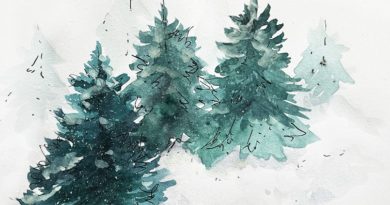Gliding on Ice
Who doesn’t love the winter months in Switzerland, with the clear skies above the snowy fields, all in view of spectacular mountain scenery.
So if you can take a winter holiday this year with your family, do it. Even a short break away from the foggy and rainy lowlands can be invigorating. And make sure you go ice skating! There are abundant ice rinks in Switzerland both natural and artificial, making it easy to experience this winter sport as a family even if you can’t take a vacation to the Alps. In the alpine areas, the usually lakes freeze each year. This presents an amazing opportunity to experience skating in a natural and beautiful setting.
Most school-age children have some experience skating with their friends on school outings to local ice rinks. You can easily visit the artificial ice rinks located in most communities. Make sure you bundle up with warm clothing, and good winter sport gloves; and children should wear helmets according to the Swiss Federal Government Regulations on Safety.
If you have young children, you can introduce them to ice skating at a local rink when they can walk well. Young children particularly enjoy skating. The first gliding exercise might be a bit shaky, but soon the children will be gliding without effort. And remember: heels turned inward toward each other, knees slightly bent, and try to stay on one leg. Of course, holding hands and gliding is always fun and helpful.
Here are a few lovely ice parks you and your family will enjoy:
- Dolder ice rink, Adlisbergstrasse 36, 8044 Zürich (website)
- Icepark Lenk, Rawilstrasse 3, 3775 Lenk
- Nature Ice Park Alp Raguta Via Mala (website)
- Ice Magic Interlaken (website)

If you decide to go ice skating with your children, or even walking on a frozen lake, make sure that the lake has been inspected by officials and declared safe. And don’t forget that some patches of ice might still be dangerous. Because weather can be very local and ice formation depends on many factors, I have compiled a list of dangers to bear in mind when venturing out onto frozen lakes.
- Avoid dark patches of ice, as they indicate thin ice.
- Snow-covered ice looks beautiful but doesn’t allow you to assess the condition of the ice.
- If you see cracks, or lines, running through the ice, avoid it altogether.
- Embankments and harbor areas full of native plants should be avoided, as the ice is often choppy here.
- If the lake is fed by a river or creek, stay far away from the mouth of the river. Even at sub-freezing temperatures, it is difficult for running water to freeze.
- If you hear or notice large bubbles or gas sounds moving under the ice, stay away! This indicates the possibility of methane bubbles forming in the underlying water and could cause fractures in the ice.
Don’t let these dangers frighten you, but just be cautious. This winter, don’t be tempted to sit back and binge-watch your favorite show or allow the children to stare at the smartphone too long! Get out with your children and walk, ski, snowboard and ice skate!
Dr. Teresa Bingham Müller
Teresa is a geophysicist who currently works as a science writer and senior editor. She is interested in robotics and the application of digitalization to solve industrial and environmental challenges. She has three marvelous adult children and two adorably wild grandchildren, ages two and five.
Photos by Pascal Schökle




